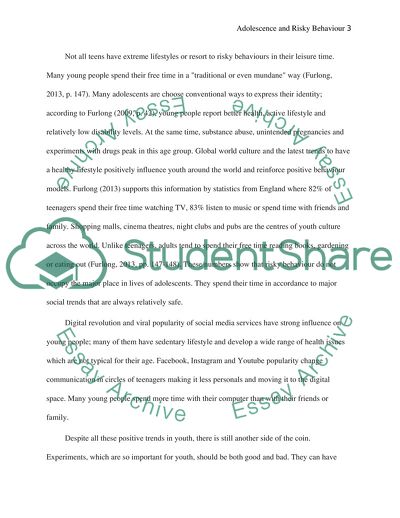Cite this document
(To What Extent Is Risky Behavior a Feature of Adolescence Essay, n.d.)
To What Extent Is Risky Behavior a Feature of Adolescence Essay. https://studentshare.org/psychology/1842598-youth-in-society-essay-titles-1to-what-extend-is-risky-behaviour-a-feature-of-adolescence
To What Extent Is Risky Behavior a Feature of Adolescence Essay. https://studentshare.org/psychology/1842598-youth-in-society-essay-titles-1to-what-extend-is-risky-behaviour-a-feature-of-adolescence
(To What Extent Is Risky Behavior a Feature of Adolescence Essay)
To What Extent Is Risky Behavior a Feature of Adolescence Essay. https://studentshare.org/psychology/1842598-youth-in-society-essay-titles-1to-what-extend-is-risky-behaviour-a-feature-of-adolescence.
To What Extent Is Risky Behavior a Feature of Adolescence Essay. https://studentshare.org/psychology/1842598-youth-in-society-essay-titles-1to-what-extend-is-risky-behaviour-a-feature-of-adolescence.
“To What Extent Is Risky Behavior a Feature of Adolescence Essay”. https://studentshare.org/psychology/1842598-youth-in-society-essay-titles-1to-what-extend-is-risky-behaviour-a-feature-of-adolescence.


